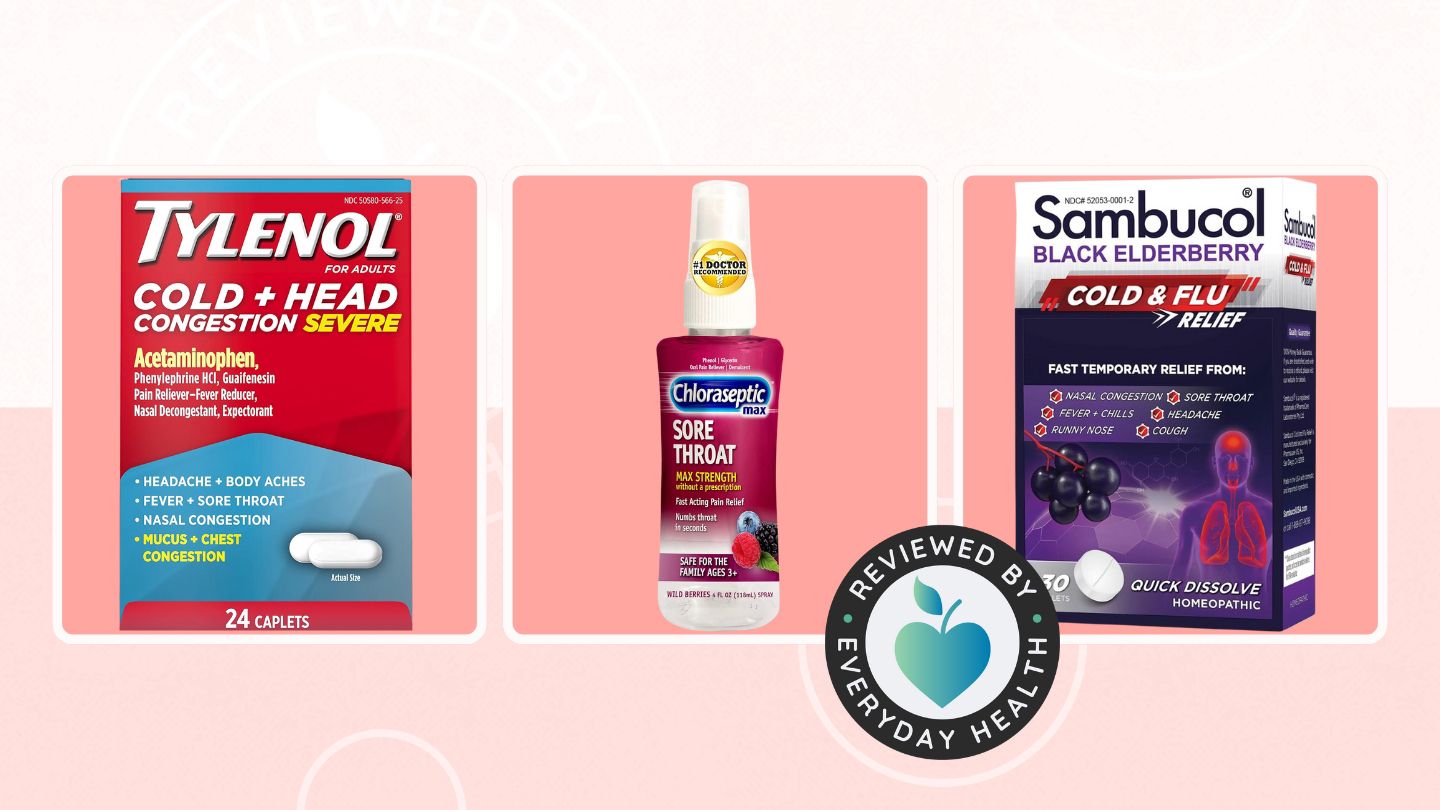Understanding Proper Use of NyQuil and Sudafed for Colds
When hit with cold symptoms like congestion and sneezing, many people reach for multi-symptom relief medicines like Sudafed and NyQuil. But with both containing active ingredients that can cause side effects or interactions, proper timing and dosage is important.
Key Differences Between Sudafed and NyQuil
While Sudafed and NyQuil can both alleviate cold misery, its crucial to understand distinctions:
- Types of Relief - Sudafed for nasal congestion vs NyQuil targets multiple cold symptoms
- Active Ingredients - Sudafed contains pseudoephedrine while NyQuil has acetaminophen, dextromethorphan and doxylamine
- Dosage Instructions - Sudafed every 4-6 hours, NyQuil every 6 hours
- Potential Side Effects - Anxiety, insomnia, increased blood pressure or interactions between antihistamine and acetaminophen
Can You Take NyQuil 4 Hours After Sudafed?
The short answer is no - medical guidance advises allowing at least 6 hours between taking Sudafed and NyQuil doses. This helps prevent possible adverse reactions from overlapping stimulant and sedative effects.
Its also key not to exceed daily maximum doses - no more than 120mg pseudoephedrine from Sudafed and no more than 4 doses of NyQuil in 24 hours.
Using Sudafed and NyQuil Together Safely
If needing to take both Sudafed and NyQuil to manage cold symptoms, follow these tips to use safely and effectively:
Take Sudafed Only During Daytime
Avoid taking Sudafed too close to nighttime as the stimulating pseudoephedrine can disrupt sleep. Stick to morning and early afternoon doses instead.
Follow Exact Dosing Instructions
Carefully follow dosage directions on both packaging to avoid issues. Don't take more Sudafed than 120mg per 24 hours or more NyQuil than every 6 hours.
Allow At Least 6 Hours In Between
Leave a minimum window of 6 hours between taking any Sudafed and NyQuil doses. This prevents any overlapping effects or interactions between the medications.
Never Double Up Doses
Don't double up on doses in an attempt to get faster relief. Take only 1 standard dose of Sudafed OR NyQuil at a given time.
Avoid Alcohol
Refrain from drinking alcohol when taking either Sudafed or NyQuil as combining can amplify side effects. Alcohol also worsens dehydration.
Stay Well Hydrated
Drink plenty of water while taking these cold meds to counteract their dehydrating effects. Proper hydration helps thin mucus secretions too.
What To Do If Side Effects Develop
Despite carefully following dosing guidelines, some people may still experience unpleasant side effects like:
- Jitters or anxiety
- Rapid heartbeat
- Dizziness
- Headache
- Nausea
If any concerning or serious reactions occur, its vital to seek medical evaluation promptly. Mild symptoms often resolve once medication clears the system.
Stop Taking Medication
Discontinue the Sudafed or NyQuil immediately if you have severe anxiety, difficulty breathing, continued vomiting or chest pain.
Control Fevers As Needed
If experiencing a higher than normal fever above 101 F, use an OTC fever reducer like acetaminophen until temperature decreases.
Treat Dehydration
Drink small, frequent sips of water or an electrolyte sports drink if dehydrated from vomiting, sweating or poor fluid intake while on the medications.
Manage Insomnia
If sleeplessness occurs, try relaxation techniques, limiting electronics/screens, and avoiding additional stimulants like caffeine until regular sleep pattern returns.
Alternative Relief Options
To avoid possible Sudafed and NyQuil interactions, consider using natural remedies or simpler OTC meds instead including:
- Saline spray/rinses - Clear congestion, soothe inflamed nasal tissues
- Peppermint essential oil - Relieves headaches, stuffiness
- Chicken soup - Provides hydration, nutrients to support healing
- Honey - Soothes sore throat
- Acetaminophen/ibuprofen - Reduce fevers and body aches
- Cough drops - Temporarily calm coughs
- Vapor rubs - Mentholated rubs ease chest congestion
Using simpler symptom-specific options can provide relief without the more complex medication interactions and side effects to worry about.
Know When To Seek Medical Care
While tolerating side effects from Sudafed or NyQuil, don't hesitate to call your doctor if you experience:
- High fever lasting over 3 days
- Cough producing green/yellow phlegm
- Worsening cold symptoms beyond 10 days
- Difficulty breathing or chest pain
- Severe vomiting, dehydration or dizziness
Prompt medical care is crucial if cold symptoms fail to improve or worsen despite home treatment with OTC medications.
FAQs
Can you take NyQuil only 4 hours after taking Sudafed?
No, medical recommendations advise allowing at least 6 hours between Sudafed and NyQuil doses to prevent potential interactions or side effects.
What's the maximum daily dose of Sudafed you can take?
Don't exceed 120 mg of Sudafed's active ingredient pseudoephedrine in a 24 hour period to avoid safety issues.
Can you drink alcohol while taking NyQuil or Sudafed?
It's best to avoid drinking alcohol when taking either Sudafed or NyQuil as combining can increase side effects.
What should you do if you experience medication side effects?
Stop taking the medication immediately, control any fever/dehydration issues, call your doctor if symptoms are severe or don't improve within a few days.
Are there alternative cold relief options besides Sudafed and NyQuil?
Yes, options like saline spray, vapor rubs, honey, cough drops, herbal teas, chicken soup or isolated acetaminophen can provide relief without complex medication interactions.
Disclaimer: This article is for informational purposes only and does not constitute medical advice. Always consult with a healthcare professional before starting any new treatment regimen.
Related Coverage
Compare Alka-Seltzer Plus and DayQuil cold and flu products by ingredients, formats, symptom relief abilities and more to determine which OTC medication is best for your needs....
Learn how Tamiflu works to shorten flu symptoms and help you recover faster. Get the facts on effectiveness, timing, and side effects....
A stuffed up nose is normally just a nuisance, but for vulnerable groups it can occasionally turn dangerous if infections spread or breathing is obstructed....
Steam therapy & essential oils in DIY vapor baths bring natural relief for colds, allergies & dry air causing nasal congestion, coughs & chest tightness....
Putting Vicks VapoRub in your nose seems like a fast sinus relief hack. But this risky use can cause painful irritation, breathing issues, and toxicity....
Compare the ingredients, benefits and side effects of Mucinex vs Dayquil. See which OTC cold medicine is most effective for cough, congestion, fever and more....
Intake nose strips open nasal passages to relieve sinus congestion fast. Learn how the strips work, proper usage, complementary remedies, and who should avoid them....
Hemorrhoids themselves are not contagious and cannot spread from person to person. However, bacteria that worsen hemorrhoid inflammation and discomfort can transmit through poor hygiene....
Taking ibuprofen together with Dayquil can exceed the daily acetaminophen limit and lead to liver damage. Learn safe alternatives for cold symptom relief....
Learn about the top homeopathic medicines that can provide relief from chest congestion due to cold, flu, asthma, allergies. Understand the causes and best home remedies....








